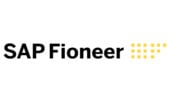In the complex financial market, the Price-to-Earnings (P/E) ratio stands as a fundamental metric, providing a snapshot of a company’s value from an investor’s perspective. It indicates how much the market is ready to pay today for a stock based on its earnings.
But not all P/E ratios point towards clear skies. Sometimes, this number dips below zero, leading to a scenario that can perplex investors – a negative P/E ratio.
This article aims to shed light on what does a negative PE ratio mean, exploring its implications on investment decisions and strategies.
The Basics of P/E Ratio
To grasp the concept of a negative P/E ratio, it’s crucial first to understand what the P/E ratio means in its basic form. The P/E ratio is calculated by dividing the market value per share by the earnings per share (EPS).
This metric gives insights into the market’s valuation of a stock relative to its earnings, essentially showing how much investors are willing to pay for a dollar of earnings.
A high P/E suggests that the stock might be overvalued, while a low P/E indicates it could be undervalued.

What Does a Negative PE Ratio Mean? Understanding Negative P/E Ratios
When a company reports losses, its earnings per share become negative, leading to a negative P/E ratio. This situation often triggers a series of questions and concerns. Several factors can cause a company to report negative earnings:
- Early Growth Stage: Many companies, especially startups, invest heavily in growth and expansion, resulting in temporary losses.
- Operational Challenges: Operational inefficiencies or a decline in sales can lead to negative earnings.
- Economic Downturns: External economic factors or a downturn in the specific industry of the company can affect its performance adversely.
Knowing why a P/E ratio is negative is crucial for investors as it provides context to the raw numbers.
Negative P/E Ratio: Analysis and Case Studies
Delving into scenarios and case studies of companies with negative P/E ratios offers valuable insights. For example, consider the technology sector, where startups often report losses in their initial years due to their focus on rapid expansion and scaling.
Despite these losses (and a negative P/E ratio), many of these companies attract significant investor interest due to their growth potential.
On the flip side, a well-established company experiencing a sudden downturn resulting in a negative P/E ratio could signal deeper problems.
Historical analyses show that while some companies recover from such situations through strategic adjustments, others struggle to return to profitability.
Investment Strategies for Stocks with Negative P/E Ratios
Investing in stocks with negative P/E ratios necessitates a comprehensive strategy rooted in research and patience. Here are key considerations for investors eyeing such opportunities:
- Deep Dive into the Reasons: Understand why the company is reporting negative earnings. Determine if the cause is temporary or indicative of deeper issues.
- Assess Growth Prospects: Consider the company’s potential for growth and recovery. Evaluate its market position, competitive advantage, and industry trends.
- Risk Management: Investing in companies with negative earnings carries higher risk. Diversification and a long-term investment horizon can mitigate these risks.
Negative P/E Ratios: Not Always a Red Flag
It’s crucial to understand that a negative P/E ratio does not inherently signal a bad investment. Sometimes, it might indicate a golden opportunity for investors willing to look beyond immediate numbers.
A company might report temporary losses due to strategic investments that are expected to yield high returns in the future. Distinguishing between temporary setbacks and fundamental issues is the key to making informed investment decisions in such scenarios.

Frequently Asked Questions
What does it mean if a company has a negative P/E ratio?
A negative P/E ratio indicates that the company is currently experiencing negative earnings. It’s essential to investigate the reasons behind the losses and their expected duration to make an informed investment decision.
Can investing in a company with a negative P/E ratio be profitable?
Yes, investing in a company with a negative P/E ratio can be profitable, provided the company’s negative earnings are temporary and it has a clear pathway to future growth and profitability.
How should investors interpret a negative P/E ratio during market downturns?
During market downturns, analyzing a negative P/E ratio requires careful consideration. It could reflect broader economic challenges or specific issues within the company. Investors should evaluate whether the negative earnings are likely to reverse as market conditions improve.
In conclusion, understanding the implications of a negative P/E ratio is vital for any investor navigating the stock market. It’s a scenario that, while initially daunting, offers a wealth of information and, potentially, opportunity. Armed with the right knowledge and approach, investors can turn the challenge of negative P/E ratios into a strategic advantage.
Conclusion
A negative P/E ratio is a nuanced signal in the investment landscape. It demands that investors dig deeper to understand the underlying reasons behind the negative earnings.
While it often warrants caution, it can also reveal opportunities for those who adopt a patient and research-driven approach to investing.
As always, due diligence and a diversified portfolio are essential to navigate the complexities of the market effectively.


 Tags:
Tags:










